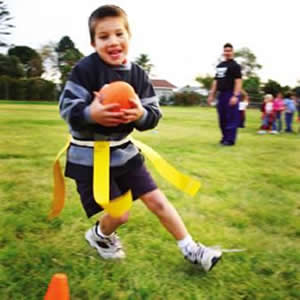KOREY STRINGER INSTITUTE RESOURCES:
KSI,
led by Executive Director Doug Casa, PhD, ATC, FACSM, FNATA (check
out his previous blog feature), is focused on policy-making, education,
research and advocacy in the area of preventing sudden death in athletics. A particular area of expertise for KSI is
exertional heat illness (EHI), but time is spent addressing other conditions
that could lead to sudden death (Just check out their education and research
tabs). As part of the policy-making arm
KSI has developed a series of policy recommendations for states when trying to
make youth (especially HS) sports safer.
KSI has taken the time to create graphics that can help you understand
whether or not your state meets any or all of the recommended guidelines in a
specific area.
Guidelines
for High Schools are available in these areas:
These
graphics are relatively easy to understand and allow you the option to click on
your specific state and “drill down” to the specific policies that may or not
be in place. For example, if you’re
interested in understanding more about heat acclimatization guidelines be sure
not to scroll past the summary information to get to the interactive map. This summary information clearly delineates
the research supported KSI recommendations (which you’ll need to know to
understand the map). Once you know the
recommendations go ahead and see how you’re state stacks up to others based on
the overall graphic. If you want to know
the specific recommendations your state meets, click on your state to learn
more.
If you want to be an advocate for your state
and get all KSI recommendations supported, KSI is willing to work with
individual states to get guidelines in place, if it’s not already happening. There are many states that do not have all
the recommendations in place at the high school, so there is work to be
done. Ultimately, I would love to see
these guidelines be required with youth sport organizations as well.
NATA SAFE SPORTS SCHOOL:

The
Safe Sports School Award is a recognition program initiated by the NATA in March 2013. A review of the application
packet delineates all the guidelines for being designated as a 1st
team or 2nd team school.
First team schools meet all recommendations, while second team schools
only meet required recommendations. The
list of requirements include:
- Create a comprehensive athletic health care administrative system
- Provide or coordinate pre-participation physical examinations
- Promote safe and appropriate practice and competition facilities
- Plan for selection, fit, function and proper maintenance of athletic equipment
- Provide a permanent, appropriately equipped area to evaluate and treat injured athletes
- Develop injury and illness prevention strategies, including protocols for environmental conditions
- Provide or facilitate injury intervention
- Create and rehearse venue-specific Emergency Action Plans
- Provide or facilitate psychosocial consultation and nutritional counseling/education
- Educate athletes and parents about the potential benefits and risks in sports as well as their
- responsibilities
The
application clearly delineates what each of these concepts include and of those
which are required and which are recommended.
The NATA does not dictate how the school and/or district works to meet
these requirements outside of utilizing current position statements to develop
relevant policies and procedures. A few
other things that you need to about this award program are 1) there is a non-refundable
application fee and 2) the application packet clearly states
that award designations are made by the NATA, based solely on the information
reported by the school. There is no submission
of supplemental documentation or on-site verification required. As an individual professional I would like an
additional verification process, but that does not mean the award is not a
useful designation when it comes to understanding the level of commitment to
athlete safety at your child’s high school.
Once
you understand where you’re state, league and high school stands on these
safety recommendations you become better prepared to protect your children
during sports participation. It is
always important to follow up with your school and understand how specific
policies are executed beyond the general recommendations delineated here. The ability to execute these policies and
procedures in an emergency is what truly protects athletes. Proper execution requires regular review and
hands-on practice of policies and procedures.
So,
does your school meet the recommended guidelines? Are the relevant emergency procedures
practiced regularly? If you can answer “yes”
then your child is participating at a safe school. If the answer is “no”, it doesn't mean your child's school is completely unsafe, it may means there is still some work to do.
What are you doing to make things better?
Heather
L. Clemons, MS, MBA, ATC


I’ve been searching for some decent stuff on the subject and haven't had any luck up until this point, You just got a new biggest fan!.. regenerative orthopedics
ReplyDeleteThe Athletic Training Certificate by Athleticare Sports Health Foundation equips individuals with essential skills in sports injury prevention, assessment, and rehabilitation. This comprehensive program, led by experienced professionals, combines theoretical knowledge with practical applications to prepare participants for careers in athletic training, ensuring the health and safety of athletes.
ReplyDelete